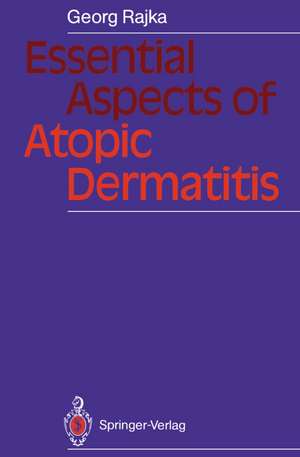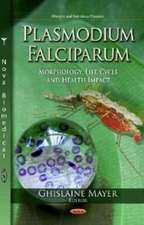Essential Aspects of Atopic Dermatitis
Autor Georg Rajkaen Limba Engleză Paperback – 13 dec 2011
Preț: 709.57 lei
Preț vechi: 746.92 lei
-5% Nou
Puncte Express: 1064
Preț estimativ în valută:
135.90€ • 140.01$ • 113.84£
135.90€ • 140.01$ • 113.84£
Carte tipărită la comandă
Livrare economică 24 februarie-10 martie
Preluare comenzi: 021 569.72.76
Specificații
ISBN-13: 9783642747687
ISBN-10: 364274768X
Pagini: 280
Ilustrații: XVI, 261 p.
Dimensiuni: 155 x 235 x 15 mm
Greutate: 0.4 kg
Ediția:Softcover reprint of the original 1st ed. 1989
Editura: Springer Berlin, Heidelberg
Colecția Springer
Locul publicării:Berlin, Heidelberg, Germany
ISBN-10: 364274768X
Pagini: 280
Ilustrații: XVI, 261 p.
Dimensiuni: 155 x 235 x 15 mm
Greutate: 0.4 kg
Ediția:Softcover reprint of the original 1st ed. 1989
Editura: Springer Berlin, Heidelberg
Colecția Springer
Locul publicării:Berlin, Heidelberg, Germany
Public țintă
ResearchCuprins
1 History and Nomenclature.- 1.1 History.- 1.2 Nomenclature.- References.- 2 Clinical Aspects.- 2.1 Prevalence.- 2.2 Course.- 2.3 Prognosis.- 2.4 Basic Clinical Features.- 2.5 Morphology and Distribution.- 2.6 Other Essential Features.- 2.7 Special Clinical Types.- 2.8 Correlations Between Distribution and Pathomechanism.- 2.9 Complications Caused by Living Agents.- 2.10 Complication of the Malfunctioning Immunomechanisms.- 2.11 Other Complications.- 2.12 Associated Conditions; Proven Correlations.- 2.13 Xerosis-Ichthyosis Group.- 2.14 Probable Correlations.- 2.15 Possible Correlations.- 2.16 Coexistence of AD with Common Skin Diseases.- References.- 3 Itch.- 3.1 Short Survey.- 3.2 Role of Itch in AD.- References.- 4 Histopathological and Laboratory Findings.- 4.1 Histopathological Findings.- 4.2 Laboratory Findings.- References.- 5 Pathomechanism: Genetic and Immunological Factors.- 5.1 Genetic Factors.- 5.2 Atopic Allergens.- 5.3 Foods.- 5.4 Other Allergens from Living Agents.- 5.5 The Atopic Antibody.- 5.6 Contact Reactivity.- 5.7 Delayed (Tuberculin-Type) Reactivity.- 5.8 Other Reaction Types.- 5.9 Concluding Remarks.- References.- 6 Pathomechanism: Cells and Mediators.- 6.1 Mast Cells and Histamine.- 6.2 Eosinophils and Their Products.- 6.3 Cyclic Nucleotides.- 6.4 Eicosanoids.- 6.5 Complement.- 6.6 Other Mediators.- References.- 7 Pathomechanism: The Altered Skin.- 7.1 Itch.- 7.2 Alteration of Skin Structure and Some Consequences.- 7.3 Water Exchange.- 7.4 Paradoxical Vascular Responses.- 7.5 Other Alterations.- 7.6 Concluding Remarks.- References.- 8 Pathomechanism: Attempt at Synthesis.- 8.1 Animal Models.- 8.2 Attempt at Synthesis.- References.- 9 Factors Influencing the Course of AD.- 9.1 Seasonal Dependence.- 9.2 Climatic Factors.- 9.3 Some Environmental Factors.- 9.4 Socioeconomic Environment.- 9.5 Occupation.- 9.6 Psychological Factors.- 9.7 Other Factors.- References.- 10 Diagnosis and Grading (Severity).- 10.1 Diagnostic Criteria.- 10.2 Differential Diagnosis.- 10.3 Grading (Severity).- References.- 11 Prophylaxis.- 11.1 Food Avoidance.- 11.2 Inhalant Allergens.- 11.3 Occupational Prophylaxis.- 11.4 Other Measures.- References.- 12 Management of AD.- 12.1 Specific and Immunological Therapy.- 12.2 General Measures.- 12.3 Systemic Therapy.- 12.4 Topical Therapy.- 12.5 Concluding Remarks.- References.










